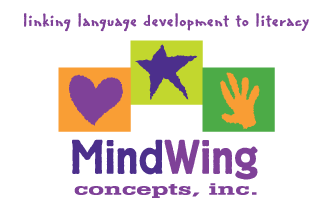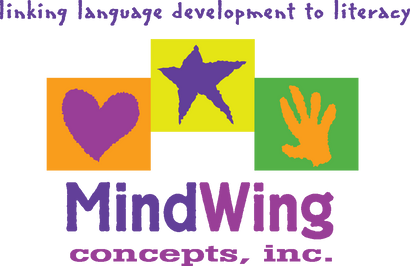Menu
-
- Home
-
About Us
-
The Approach
-
Linking Language & Literacy
-
MindWing Learning
-
Learning Resources
-
SHOP
-
Blog
-
- About MindWing
- Our People
- Contact Us
- Your Account
- Login
-
Spain (EUR €)

Penguins: The COOL Topic For Narrative and Expository Text!
January 11, 2017 5 min read
 A recent posting shared on MindWing’s Facebook page (http://tinyurl.com/pierrewhitneyslp) showed a fantastic SGM® lesson by Whitney Chitty Smith of “Let’s Talk with WhitneySLP,” related to the book, Pierre the Penguin, A True Story, written by Jean Marzollo and illustrated by Laura Regan.
A recent posting shared on MindWing’s Facebook page (http://tinyurl.com/pierrewhitneyslp) showed a fantastic SGM® lesson by Whitney Chitty Smith of “Let’s Talk with WhitneySLP,” related to the book, Pierre the Penguin, A True Story, written by Jean Marzollo and illustrated by Laura Regan.
After viewing this terrific post (Thank You, Whitney!), I immediately went to the top drawer of my desk and pulled out the book. I had started a blog entry for this book back in November and had never completed it!
 We had ordered Pierre the Penguin after reading an article in our local newspaper, “The Republican,” here in Springfield, MA. The book had been used at a family literacy night at one of our city schools to provide parents with ideas of how to use this book and others with their children at home. This book, written in rhyme, is a lovely story of the dedication of Pam, an aquatic biologist, and the bond between people and animals. The book presents many facts about penguins as well as including a questions/answers page with Pam presented at the end of the book.
We had ordered Pierre the Penguin after reading an article in our local newspaper, “The Republican,” here in Springfield, MA. The book had been used at a family literacy night at one of our city schools to provide parents with ideas of how to use this book and others with their children at home. This book, written in rhyme, is a lovely story of the dedication of Pam, an aquatic biologist, and the bond between people and animals. The book presents many facts about penguins as well as including a questions/answers page with Pam presented at the end of the book.
Using MindWing’s Universal Magnets, Whitney had outlined the selection from Pierre’s perspective. Below is the story outlined using the SGM® icons from Pam’s perspective.
|
|
This may be divided up, depending on your students, into a second episode as shown below. This begins from the rule above, after the prescription attempt. This is a great way to use our new product: The Critical Thinking Triangle in Action!
|
A New IE:

|
There is a great deal of information presented in an interview section with Pam at the end of the book, including a more detailed explanation of how/why Pierre became featherless. This makes this a fantastic non-fiction selection that presents the story in narrative form while bringing in expository information as well! I can see why it was chosen to share with parents!
Also included is the website where you can view the penguins live at the San Francisco California Academy of Sciences, which features an aquarium, planetarium, and natural history museum to share knowledge of these habitats and learn more about penguins. www.calacademy.org/webcams/penguins
(As a follow up to educators, Pierre passed away April 6, 2016, at the age of 33.)
After completing the above, I went to our local library here in Springfield and came away with a great selection of books related to our penguin theme.
 National Geographic Kids Penguins (Level 2) by Anne Schreiber is part of the National Geographic Science Readers. It may easily be shared with a group of students using the SGM ThemeMaker® Descriptive Map. We followed the same format as with our previous posts on armadillos (8/12/15), cheetahs (9/3/15) and koalas (10/5/15) using the categories: Physical Appearance, Food and Eating, Habitat, Young, and Special Characteristics. You may use as many categories as you wish. Below is a sampling of what may be included in the categories.
National Geographic Kids Penguins (Level 2) by Anne Schreiber is part of the National Geographic Science Readers. It may easily be shared with a group of students using the SGM ThemeMaker® Descriptive Map. We followed the same format as with our previous posts on armadillos (8/12/15), cheetahs (9/3/15) and koalas (10/5/15) using the categories: Physical Appearance, Food and Eating, Habitat, Young, and Special Characteristics. You may use as many categories as you wish. Below is a sampling of what may be included in the categories.
Share the book with the students. Then, review several paragraphs at a time and begin to add information to the map.
Page 5:
- cannot fly (special characteristics)
- spend most time in the ocean (habitat)
Pages 6, 7:
- found between Equator and South Pole (habitat)
- live on islands, coasts, icebergs (habitats)
Pages 8, 9:
- big webbed feet (physical appearance)
- layers of soft feathers (physical appearance)
- oily feathers on top (physical appearance)
- stiff flippers act like boat paddles (special characteristics)
- big eyes, see underwater (special characteristics)
Page 13:
- eat lots of fish (food/eating)
- hooked beak to grab dinner (food/eating)
- barbed tongues and throat (food/eating)
- can clean salt from water (food/eating)
This format may be used with all age groups. Based on your students, you can decide on the selection, the categories, or whether students work independently, in groups, or class setting, etc. The SGM ThemeMaker® Maps are adaptable across grade levels and curriculum!
Below are additional books that I found at our local library and a link to a free SGM downloadable “Cool Penguin Facts” handout for younger students.
Expository Books:




Fontanel, Beatrice. The Penguin, A Funny Bird. Massachusetts: Charlesbridge Publishing, 1989.
Jango-Cohen, Judith. Penguins. New York: Benchmark Books, 2002.
Lang, Aubrey. Baby Penguin. Canada: Fitzhenry & Whiteside, 2001.
Lepthien, Emilie. A New True Book, Penguins. Chicago: Childrens Press, 1983.
Robinson, Claire. In The Wild, Penguins. Illinois: Reed Educational & Professional Publishing, 1997.
Simon, Seymour. Penguins. New York: HarperCollins Publishers, 2007.
Switzer, Merebeth. Getting To Know… Nature’s Children, Penguins. New York: Scholastic Inc., 1988.
Two books in journal format provided information not only on penguins but on Antarctica as well:


Potter, Keith. Seven Weeks on an Iceberg. California: Chronicle Books, 1999. This book would be suitable for elementary students, as we are led on a tour of Antarctica by Queen and King Penguin! It’s full of facts about penguins; the two penguin characters add a fun element for younger students.
Webb, Sophie. My Season With Penguins, An Antarctic Journal. Boston: Houghton Mifflin Company, 2000. This selection would be one for upper elementary and middle school students.
Fiction:



Atwater, Richard and Florence. Mr. Popper’s Penguins. Boston: Little, Brown and Company, 1938.
Buzzeo, Toni. One Cool Friend. New York: Penguin Group Inc., 2012.
And let’s not forget The Magic School Bus, Penguin Puzzle, which combines both narrative and expository texts!
Leave a comment.
Comments will be approved before showing up.

